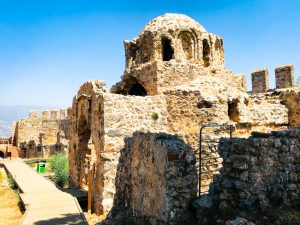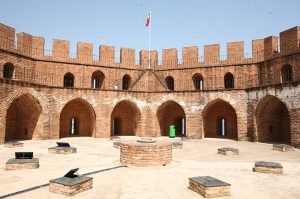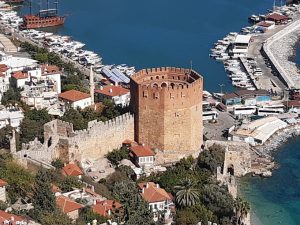Hightlight
-
 Air conditioner
Air conditioner
-
 Credit cards
Credit cards
-
 Reservations
Reservations
-
 Tour Guide
Tour Guide
Alanya Castle
Alanya Castle is like an abstract of the history of Alanya, which has been a popular settlement throughout history due to its location.
Built to make Alanya a protected area, which is always wanted to be seized due to its strategic importance and therefore needed to be defended, it is possible to see almost every civilization in the history of Alanya on its walls and inside the Castle, although most of the castle made in Seljuk style. Alanya Castle, which is thought to date back to the 3rd century BC, is one of the most robust defense structures on earth.
It can be a bit tiring to walk the entire Castle, which has 6.5 kilometers of city walls. However, the excitement of discovering a symbol or an inscription hidden on its walls and doors and its spectacular view, including Cleopatra Beach, are certainly worth the effort. Moreover, this is not just a trip to the walls.
Byzantine, Seljuk and Ottoman artifacts are found in the inner castle section which can be described as an Open Air Museum and is thought to have been inhabited contemporarily with the history of Alanya.
Churches and chapels from the Byzantine Period, the commercial structure Bedesten, the Masjid and Mausoleum dated 1230 bearing the name of Akşebe Sultan who was one of the first commanders of the Castle, the Seljuk palace where the remains of old buildings were used for its construction, houses and baths proving that a large population once lived here, more than 400 cisterns that met the water needs of the Castle, dungeons, Suleymaniye Mosque which is a 13th century work but rebuilt by Suleiman the Magnificent, and the lighthouse dated 1720 that led ships for man.
Damlataş Cave
Damlataş Cave is a cave in Alanya district of Antalya Province, in southern Turkey.
Damlataş Cave was discovered in 1948 during the quarrying for the stone to be used in the construction of the port. The cave is on the west coast of the historical peninsula. There is a 50-meter passage at the entrance of the cave. After the passage with a height of 15 meters, a cylindrical space is reached. From here, it goes down to the bottom of the cave. The stalactites and stalagmites of the cave, which is located in the semi-crystalline limestone, were formed in 15 thousand years. The cave was named Damlataş because of the water drops that continue to drip from the stalactites.
How to Reach: Transportation can be provided by city transportation vehicles.
Red Tower (Kızılkule):
Kızılkule, a unique example of medieval Mediterranean defensive structures of the 13th century. It was built by the builder Abu Ali Raha al-Katani from Aleppo by the Seljuk ruler I. Alaaddin Keykubat in order to protect the port, shipyard and fortress of Alanya from sea attacks.
















